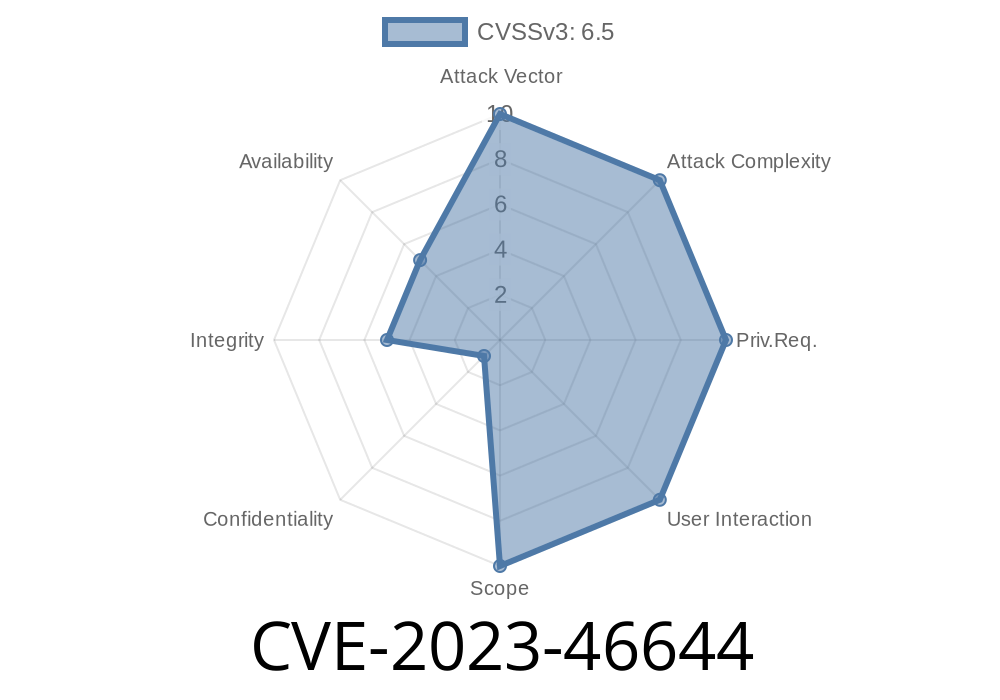WordPress has become the go-to platform for building websites and blogs due to its flexibility and ease of use. However, its widespread adoption also means that it has become a prime target for potential attackers. In this post, we will discuss a recently discovered vulnerability in the WordPress CTA PRO plugin (versions n/a through 1.5.8) that could allow attackers to exploit incorrectly configured access control security levels. We will provide details on the vulnerability and share a code snippet that demonstrates the exploit. We will also reference original sources and share tips on how to mitigate this vulnerability to protect your WordPress-powered websites.
CVE-2023-46644 Vulnerability Details
The CVE-2023-46644 vulnerability is classified as a "Missing Authorization" vulnerability. This issue affects the WordPress CTA PRO plugin, specifically in versions n/a through 1.5.8. The vulnerability occurs when the plugin allows users with insufficient access levels to perform certain critical actions.
As a result, malicious users could potentially exploit this vulnerability by manipulating specific parameters and executing unwanted actions on the affected WordPress website. This could potentially lead to unauthorized access, data breaches, and various other types of cyber threats.
To better understand this vulnerability, let's look at an example code snippet that demonstrates its exploitation:
Code Snippet
// Example of exploiting the Missing Authorization vulnerability
GET /wp-admin/admin-ajax.php?action=CTA_PRO_exploit&user_role=subscriber HTTP/1.1
Host: vulnerable-wordpress.com
Content-Type: application/x-www-form-urlencoded
CTA_PRO_action=download&CTA_PRO_filename=../../../../wp-config.php
In this example, we can see the vulnerability being exploited by sending an HTTP GET request with the "action" parameter set to "CTA_PRO_exploit" and the "user_role" parameter set to "subscriber". By manipulating these parameters, an attacker could potentially gain unauthorized access and download sensitive files, such as the WordPress configuration file (wp-config.php), which contains critical information related to the website's database.
Original References
To learn more about the CVE-2023-46644 vulnerability, you may refer to the following original references:
1. CVE-2023-46644 - National Vulnerability Database (NVD)
2. WordPress CTA PRO Plugin Vulnerability - WPScan Vulnerability Database
Mitigating the Vulnerability
To protect your WordPress websites from the CVE-2023-46644 vulnerability, you can take the following steps:
1. Update the plugin: Make sure you update the WordPress CTA PRO plugin to the latest version, as the developers may have already patched the vulnerability in newer releases. If an update is not available, consider reaching out to the plugin author for support.
2. Audit user roles: Review and manage user roles and permissions on your WordPress website. Ensure that only trusted users have access to critical functions and features.
3. Implement access control: If possible, implement access controls to limit the features and actions available to users with lower access levels. One way to do so is through the WordPress Role-Based Access Control (RBAC) system, which allows you to define user roles and their associated capabilities.
4. Monitor your website: Regularly monitor your WordPress website for unauthorized access, modifications, and other suspicious activities. You can use security plugins and services to help with this task.
Wrap-up
The CVE-2023-46644 missing authorization vulnerability in the WP CTA PRO plugin (versions n/a through 1.5.8) highlights the importance of properly configuring access control security levels on your WordPress websites. By understanding the vulnerability and taking the necessary steps to mitigate it, you can help protect your website and its users from potential cyber threats.
Timeline
Published on: 01/02/2025 12:15:14 UTC
